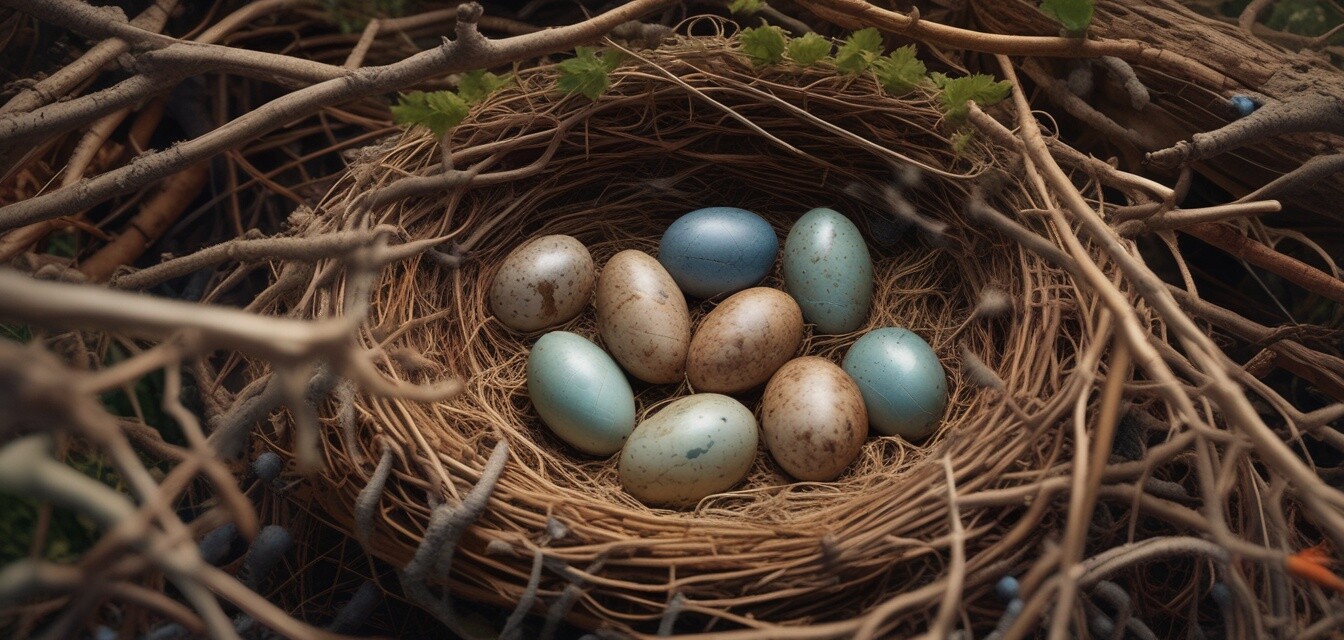
The best options for bird nesting materials
- Choosing the right nesting materials is crucial for the comfort and safety of cage birds.
- Natural materials like grass, twigs, and feathers are often preferred for their insulation properties.
- Cleaning and maintenance of nesting materials are essential to prevent health issues.
- Consider the specific needs of various bird species when selecting nesting materials.
- Regularly check nesting materials for wear and tear and replace them as necessary.
Nesting is an essential part of a bird's life, especially for those in captivity. The right choice of nesting materials can ensure comfort, safety, and even happiness during breeding seasons. In this guide, we will explore various options for bird nesting materials, helping you make the best decisions for your feathered friends.
Importance of nesting materials
Nesting materials serve several purposes for cage birds:
- Provide comfort: Soft materials support the bird's body during rest and breeding.
- Promote safety: The right materials can help prevent injury and provide warmth.
- Foster a natural behavior: Birds are instinctively drawn to create nests, an activity that is crucial for their mental health.
Types of nesting materials
Different types of cage birds might prefer different nesting materials, so it's essential to understand the options available:
| Nesting Material | Type of Bird Suitability | Pros | Cons |
|---|---|---|---|
| Grass | Finches, Canaries | Soft, natural, and easy to manipulate. | May not provide sufficient insulation. |
| Twigs | Parakeets, Cockatiels | Provide structure and stability. | Can be hard and uncomfortable. |
| Feathers | All types | Warm and cozy, great for insulation. | Can harbor bacteria if not cleaned regularly. |
| Paper (untreated) | Lovebirds, Budgerigars | Soft, easy to shred and mold. | Might not be durable if wet. |
| Wood shavings | All types | Absorb moisture and provide odor control. | Can cause respiratory issues if too dusty. |
Where to find quality nesting materials
When looking for nesting materials, it's crucial to source them from trusted suppliers. Here are some options:
- Bird habitat enhancements: Specific products designed to improve your birds' living space.
- Bird care & health: Quality materials that keep your birds safe and healthy.
- Bird food & supplements: Ensuring your bird's nutritional needs are met can aid in overall well-being.
Tips for using nesting materials
Beginner's section: Using nesting materials effectively
- Always ensure the materials are clean and free from chemicals or preservatives.
- Consider mixing different types of materials for a more appealing nest.
- Change out old nesting materials regularly to prevent hygiene issues.
- Observe your birds' preferences; some may prefer one type over another.
- Always provide more than one nesting option to avoid conflicts.
Maintaining nesting materials
Proper maintenance of nesting materials is essential for the health of your birds:
- Regularly inspect nests for wear and tear.
- Remove and replace any spoiled materials promptly.
- Keep an eye out for mold or unpleasant odors, which may signify the need for a thorough cleaning.
- Ensure that all materials are safe and non-toxic.
Conclusion
Choosing the right nesting materials is vital for your cage birds' comfort and well-being. By providing suitable options, observing their preferences, and maintaining cleanliness, you can ensure a safe and cozy breeding environment for your feathered friends.